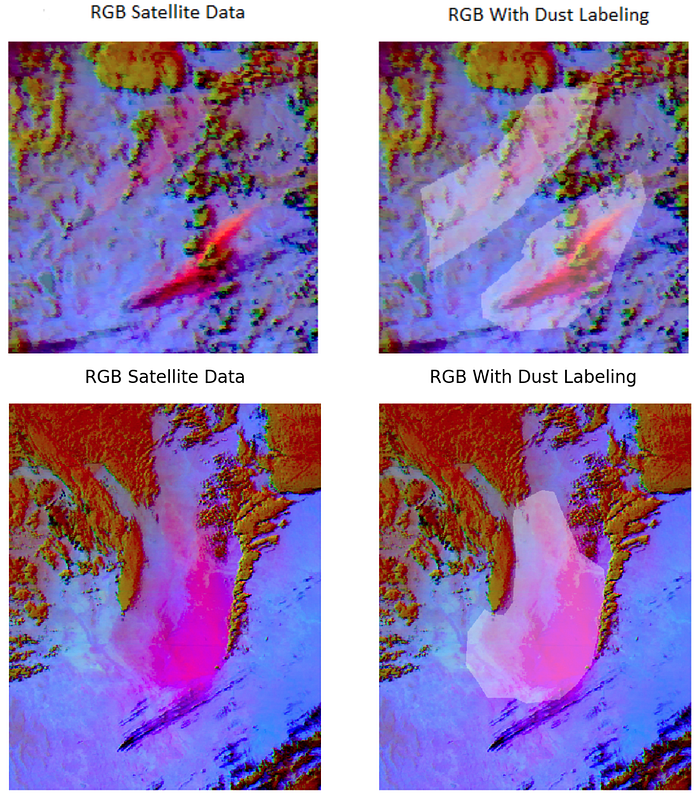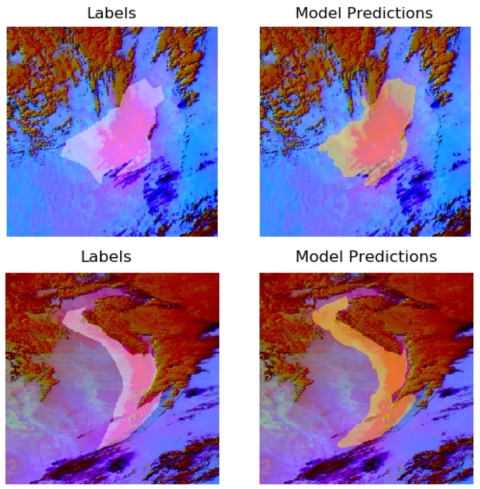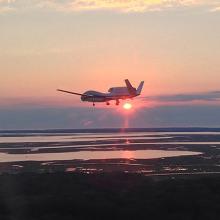Throughout the world, dust storms wreak havoc on many aspects of human life including health, aviation, solar power generation, and agriculture, among others. Given the hazards that this natural phenomena causes, it is imperative that societies are prepared for the onset of these storms to minimize economic loss and save lives.
Utilizing the data received from Earth observation satellites, it is possible for atmospheric scientists to detect developing dust storms; however, even for experts, it can be difficult to detect dust storms in satellite images obscured by clouds, smoke, or nighttime conditions. Furthermore, manual detection requires atmospheric scientists to gather together the relevant satellite images, which takes time before a complete analysis can be made.
The ability to automatically detect dust is potentially a large boon for the Earth science community. Incorporating an artificial intelligence (AI) tool can allow atmospheric scientists to execute in depth analysis of dust and dust storms more quickly on a global scale. Reducing the time required to identify dust within satellite images can improve the identification of trends in dust activity over time and potentially provide insight towards climate and environmental change.
Using AI and deep learning (DL) techniques, IMPACT’s machine learning team, in partnership with the Short-term Prediction Research and Transition Center, is creating a software that automatically detects atmospheric dust independent of subject matter experts, all in real time. The success of this AI can speed up the process of atmospheric evaluation of impending dust storms.

The team’s approach to automating dust detection is to model it as a semantic image segmentation problem, similar to what is used for other object detection tasks like autonomous vehicles or medical imaging diagnosis. The team developed a dataset labeled at the pixel level, so classifications are executed for every pixel within an image. The predictions that come from the model essentially portion out the region within the image that pertains to dust. The dust detection tool is built using a UNET architecture for the segmentation task in order to utilize the model’s lightweight nature, fast training times, and faster inference relative to other DL image segmentation models. The model
The model leverages convolution in order to learn the features of the image and associate lower level features like gradients with larger features like dust storms.
The available dataset was not suitably large in comparison to other datasets, so the team used image augmentations in order to scale the dataset to be big enough for a DL model. The implementation utilizes Python, Tensorflow, and Keras. Tensorflow and Keras are libraries that essentially wrap up the extensive mathematical algorithms necessary for probabilistic detection of dust storms, since most AI and DL boils down to probability, derivative calculus, and linear algebra.

A key member on IMPACT’s dust detection team is Talha Khan, an intern and computer science undergraduate at the University of Texas at San Antonio. Talha has found himself drawn to AI research, in part because of its implications for understanding human comprehension and learning and the ways it can be mathematically modeled and represented in computers. Talha explains:
"When I was a freshman in college, I learned about a concept called mind uploading, which essentially posits that the consciousness of a human could be mapped and uploaded into a computer. The implications of this kind of technology are astounding to me, but the biggest question is, what is consciousness?"
Talha has valued his time as part of IMPACT, particularly what he describes as an environment of warm hearted energy and excellent technical mentorship. Though his internship lasts only through the end of summer, his experiences with IMPACT have provided him with hands-on DL experience, including the nuances and optimization of coding structures and the realization of tangible research experience including conference publications.
"The professional experience I’ve gained with IMPACT has been tremendous, and I wouldn’t trade it for the world."
More information about IMPACT can be found at NASA Earthdata and the IMPACT project website.


